Vettuvan Koil Temple Spectacular Monolith Dedicated To Lord Shiva And Built By Pandya Dynasty
Angela Sutherland - AncientPages.com - Vettuvan Koil (“heaven of sculptors” or “the temple of slayer”) is a temple dedicated to the Hindu god Shiva, the most popular deity of the Hindu pantheon and associated with many areas of life.
Vettuvan Koil Temple built in the 8th century and dedicated to Lord Shiva. Image credit: wikimi
Vettuvan Koil is a rock-cut Hindu temple whose lower part has never been finished, while the upper portion has been completed with more than 120 beautiful and intricate sculptures.
It is the only monolithic Pandyan temple still surviving, and therefore, it is indeed a historical and valuable architectural object even if the work has never been completed.
The structure - dated to the 8th and 9th centuries - is a monolith cave temple carved out from a single, rectangular granite rock measuring 7.5 m (25 ft) in depth. The granite rock looks like a blooming lotus with rocky hills surrounding it from three sides.
The object is notable for its architecture and construction method, associated with the early Pandya dynasty.
It is situated in Kalugumalai, Thoothukudi district in the South Indian state of Tamil Nadu. While the early Pandya rulers helped construct several cave and stone temples, the Vettuvan Koil is the only known example of a Pandya era monolithic temple that was carved out in three dimensions and in-situ from the top of the Kalugumalai hillock.
The interior of the temple is spectacular. The ceiling over the sanctum (known as Vimana) has beautiful niches decorated with Parsavadevatas, the attendant deities of Shiva, that include Dakshinamurthy, an aspect of Shiva as a guru (teacher) of all types of knowledge), playing a terracotta two-sided drum, a mridanga, Siva with his consort Uma, the Hindu goddess of harmony, fertility, love, beauty, marriage, children, and devotion, all accompanied by dancers. There are also amazing niches decorated with lions, monkeys, and the bull (Nandi), sacred vahana (“mount”) of Shiva, identified as a vehicle. In the Hindu religion, Nandi is the gate-guardian deity of Kailash, the home of Lord Shiva.
Vettuvan Koil Temple, Tamil Nadu. source
The Kalugumalai hillock also includes two other objects – the 8th-century Kalugumalai Jain Beds and Kalugasalamoorthy Temple, dedicated to the Hindu god Murugan, also built under the Pandya’s patronage. It is believed that this monument was established during the reign of Pandya Maranchadayan king.
Legends Of The Unfinished Rock Cut Temple
There are some interesting local legends associated with this temple too. Especially two of them are very well-known. One legend says about a great rivalry between a father and a son, The son claimed that he would complete carving a Murugan temple in the foothills before his father could complete the Shiva shrine uphill, and so it happened.
His father was so terribly angry that he killed his son, thus leaving the Shiva temple incomplete. In another version of the story, a father sculptor wanted his son to first learn the tricks of carving before starting his work. His son, apparently, wanted to make things in his own way. So when he heard him chiseling away in the inner chamber of the temple, the father got so furious due to the son’s disobedience that he killed him.
Unfortunately, except for legends about the Pandyan craftsmen, not much historical information is available regarding the Vettuvan Koil.
Both concept and style of architecture of the Vettuvan Koil are very similar to that of Virupaksha Temple at Karnataka by Vikramaditya II during 734–44, Kanchi Kailasanathar Temple built by Narasimhavarman II during 685–705 AD, and Kailasa temple, Ellora, the largest of the rock-cut Hindu temples in Maharashtra, India constructed by Krishna I during 756–77.
However, Vettuvan Koil Temple is still very unique because of its spectacular gallery of images, which most probably inspired sculptures in Ellora's Kailasa Temple in Maharashtra, India.
Written by - A. Sutherland - AncientPages.com Senior Staff Writer
Copyright © AncientPages.com All rights reserved. This material may not be published, broadcast, rewritten or redistributed in whole or part without the express written permission of AncientPages.com
Expand for referencesReferences:
More From Ancient Pages
-
 Huge Unknown Ancient Lost World Discovered Inside Giant Sinkhole In China
News | May 19, 2022
Huge Unknown Ancient Lost World Discovered Inside Giant Sinkhole In China
News | May 19, 2022 -
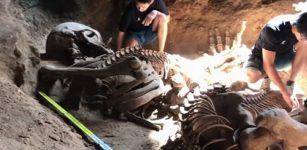 Ancient Giant Skeleton Discovered In Krabi Cave Confirms Legend Of The Nagas – Or Perhaps Not
Archaeology | May 17, 2020
Ancient Giant Skeleton Discovered In Krabi Cave Confirms Legend Of The Nagas – Or Perhaps Not
Archaeology | May 17, 2020 -
 Archaeologists Solve A 1,000-Year-Old Mystery Mentioned In Norse Sagas
Featured Stories | Oct 10, 2024
Archaeologists Solve A 1,000-Year-Old Mystery Mentioned In Norse Sagas
Featured Stories | Oct 10, 2024 -
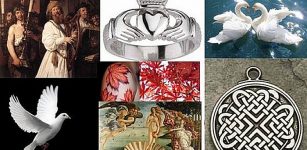 10 Ancient Love Symbols
Ancient Symbols | Jan 5, 2016
10 Ancient Love Symbols
Ancient Symbols | Jan 5, 2016 -
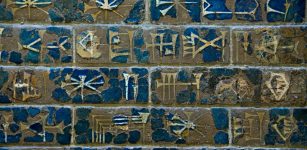 Ishtar Gate, The Eighth Gate Of The Inner City Of Babylon
Civilizations | Sep 6, 2015
Ishtar Gate, The Eighth Gate Of The Inner City Of Babylon
Civilizations | Sep 6, 2015 -
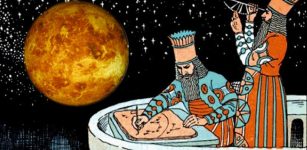 Elusive Planet Mercury As Seen Through The Eyes Of Ancient Astronomers
Archaeoastronomy | Dec 31, 2018
Elusive Planet Mercury As Seen Through The Eyes Of Ancient Astronomers
Archaeoastronomy | Dec 31, 2018 -
 William Adams: The Journey To Becoming The First White Samurai
Featured Stories | Jul 11, 2018
William Adams: The Journey To Becoming The First White Samurai
Featured Stories | Jul 11, 2018 -
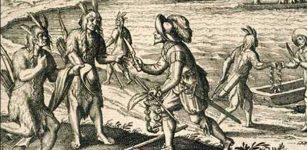 Indigenous People In Oconee Valley Remained In Southeastern US For Nearly 150 Years
Archaeology | Jul 15, 2020
Indigenous People In Oconee Valley Remained In Southeastern US For Nearly 150 Years
Archaeology | Jul 15, 2020 -
 Copyright Violations By Earth-Chronicles.com – Fake Site That Steals Content From Ancient Pages Daily
News | Dec 28, 2017
Copyright Violations By Earth-Chronicles.com – Fake Site That Steals Content From Ancient Pages Daily
News | Dec 28, 2017 -
 Student Finds Beautiful Viking Age Silver Hoard In Aarhus, Denmark
Vikings | Aug 21, 2024
Student Finds Beautiful Viking Age Silver Hoard In Aarhus, Denmark
Vikings | Aug 21, 2024 -
 Evidence Of Cosmic Catastrophe 12,800 Years Ago – Earth Collided With Fragments Of A Comet
Archaeology | Feb 2, 2018
Evidence Of Cosmic Catastrophe 12,800 Years Ago – Earth Collided With Fragments Of A Comet
Archaeology | Feb 2, 2018 -
 TB Was Transmitted in South America – DNA Study Shows How It Happened
Archaeology | Mar 17, 2022
TB Was Transmitted in South America – DNA Study Shows How It Happened
Archaeology | Mar 17, 2022 -
 People Who Carry Neanderthal Gene Variants Have Greater Pain Sensitivity
DNA | Oct 11, 2023
People Who Carry Neanderthal Gene Variants Have Greater Pain Sensitivity
DNA | Oct 11, 2023 -
 Forbidden Ancient Manuscripts Almost Erased From History – Unusual Myths, Beliefs And Practices – Part 2
Ancient Mysteries | May 11, 2018
Forbidden Ancient Manuscripts Almost Erased From History – Unusual Myths, Beliefs And Practices – Part 2
Ancient Mysteries | May 11, 2018 -
 How Did A Roman Sarcophagus End Up On A Beach Near Varna In Bulgaria?
Archaeology | Aug 6, 2024
How Did A Roman Sarcophagus End Up On A Beach Near Varna In Bulgaria?
Archaeology | Aug 6, 2024 -
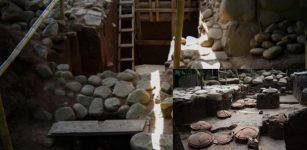 2,000-Year-Old Stela And ‘Laboratory’ Of Early Maya Writing Found In Guatemala
Archaeology | Mar 15, 2020
2,000-Year-Old Stela And ‘Laboratory’ Of Early Maya Writing Found In Guatemala
Archaeology | Mar 15, 2020 -
 Should Scientists Open An 830-Million-Year-Old Rock Salt Crystal With Ancient Microorganisms That May Still Be Alive?
Archaeology | May 27, 2022
Should Scientists Open An 830-Million-Year-Old Rock Salt Crystal With Ancient Microorganisms That May Still Be Alive?
Archaeology | May 27, 2022 -
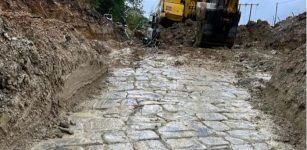 Hidden 2,000-Year-Old Roman Road Uncovered In Worcestershire Could Be Of ‘Global Importance’
Archaeology | Nov 12, 2022
Hidden 2,000-Year-Old Roman Road Uncovered In Worcestershire Could Be Of ‘Global Importance’
Archaeology | Nov 12, 2022 -
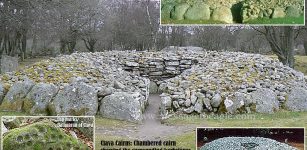 4,000-Year-Old Scottish Clava Cairns Were Built To House Dead
Civilizations | Nov 27, 2018
4,000-Year-Old Scottish Clava Cairns Were Built To House Dead
Civilizations | Nov 27, 2018 -
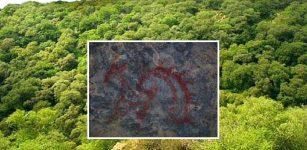 Haryana Caves In Mangar Bani Hide An Ancient Secret – Are These The Oldest Cave Paintings In India?
Archaeology | Jul 28, 2021
Haryana Caves In Mangar Bani Hide An Ancient Secret – Are These The Oldest Cave Paintings In India?
Archaeology | Jul 28, 2021


